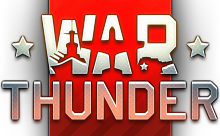Aircraft/Loadouts de Havilland Venom / Sea Venom / SNCASE Aquilon
32 members have voted
-
1. de Havilland Venom
-
Add Venom FB.126
-
Add Venom NF.220
-
Add Venom NF.322
-
No Venom FB.11
-
No Venom NF.22
-
No Venom NF.32
-
-
2. de Havilland Sea Venom
-
Add Sea Venom FAW.2029
-
No Sea Venom FAW.203
-
-
3. SNCASE Aquilon
-
Add Aquilon 20120
-
Add Aquilon 20224
-
No Aquilon 2014
-
No Aquilon 2024
-

This topic is now closed to further replies.
Share
Followers
0
-
Recently Browsing 0 members
No registered users viewing this page.
